

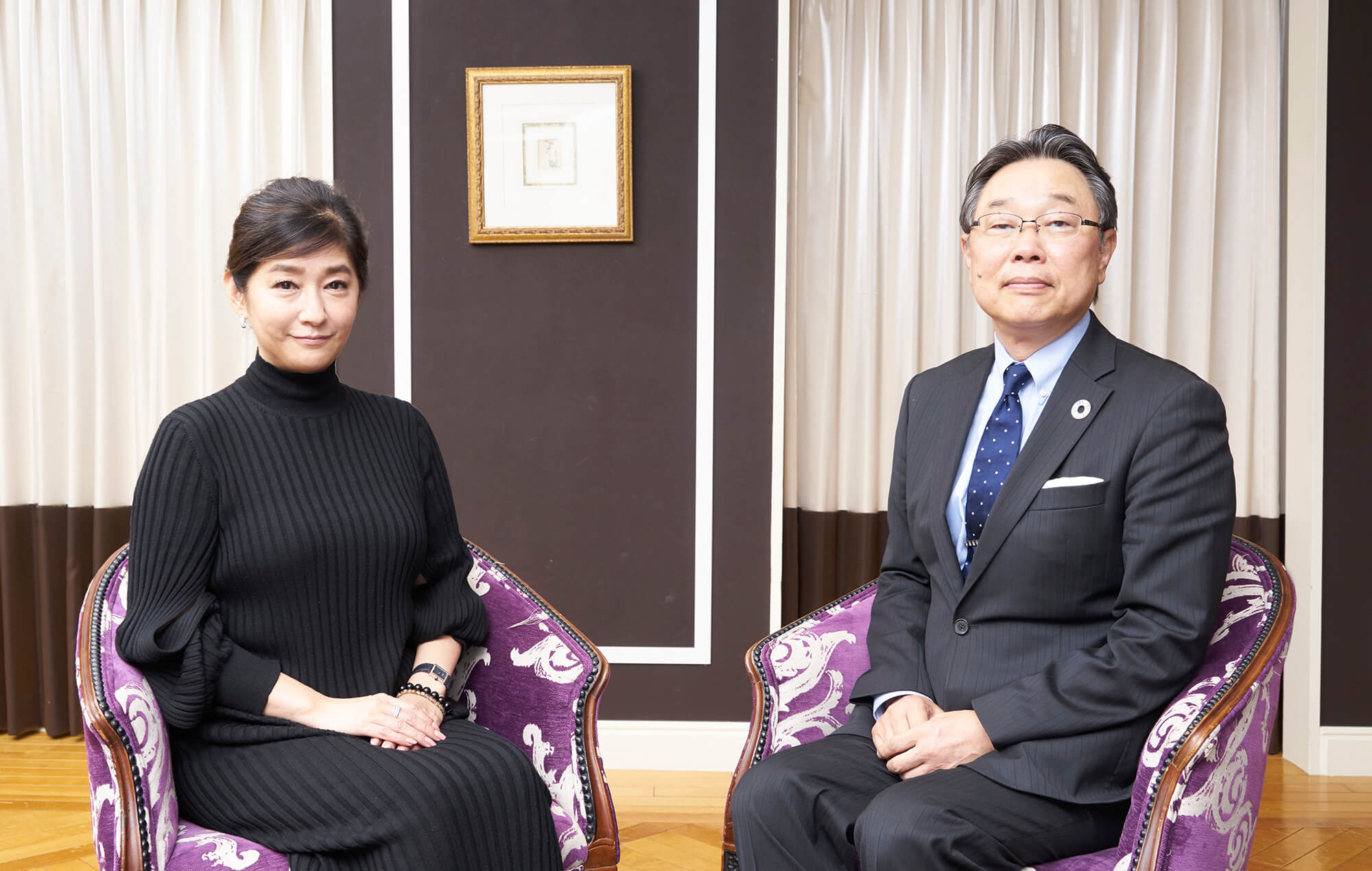
As a company involved with map data, software development, and precision map services for MapFan and other car GPS systems, Increment P was reborn under the new corporate name GeoTechnologies on January 20, 2022. Within the framework of the SDGs, what is the direction GeoTechnologies must take in the future as an ESG company, and what are the roles map services must play and the vision for these?
With his many years of involvement in management in IT and digital technologies industries in Japan, the US, and throughout the world, how will Hiroshige Sugihara approach the automotive and map industries as President & CEO? As part of this series, Mr. Sugihara speaks with various industry leaders and experts to uncover the future stance of the newly emergent GeoTechnologies.
In this installment, Mr. Sugihara spoke with Maoko Kotani, a business news anchor who has continuously reported on the front lines of the IT and automotive industries. The conversation began quietly as the two gazed at an old leather-bound map.
Maoko Kotani (the following, honorifics omitted)Is this an old atlas map?
Hiroshige Sugihara, President & CEO (the following, honorifics omitted)This is a map I used to use when I was a student in the 1980s. At the time I drove a used 1977 Pontiac Grand Am, but being a poor student, I would ride around listening to Eikichi Yazawa on a radio-cassette player that I carried with me in my car instead of a tape deck. I started out in Louisiana, and passed through Tennessee and Oklahoma on my way to California, you know.
KotaniRoute 66. I also drive when I go to the US, but I’m always desperate not to miss my exit off the highway. In the old days, I would have to stop along the side of the road and glare at a map whenever I went somewhere by car.
SugiharaWhen I was in the US, I would buy different scale maps when filling up at the first gas station I found whenever I stopped in the county I was headed. I still collect maps wherever I go. Note-covered maps and travel logs are a private passion of mine. I think GeoTechnologies can create this kind of experience. I want to ensure a freedom and open-mindedness that will allow billions of people all over the world to pursue their path of choice.
KotaniGuessing from the way you talk and your personality, do you think that your different experiences in Japan and abroad helped you develop a character like that of people overseas, where you can be yourself?
SugiharaI was a member of the judo team in junior high school and the rugby team in senior high school, which were worlds where something that was black would be white if that was what your senior told you. So, my personality completely melted down when I suddenly moved to the US. I am glad that I was exposed to US culture, where I was able to discard my preconceived notions and where it was okay to try new things even if I ended up failing or being mistaken.
KotaniDid you feel uneasy about having to establish yourself as an individual in the US after moving there?
SugiharaWhen I was a student, I learned that I got my point across better if I spoke English in a loud voice than in a quiet voice, even for simple things. Every time I ordered vanilla ice cream in a quiet voice, for example, I would end up with banana because of the V and L in vanilla, which Japanese people have difficulty pronouncing.
Kotani(Laughs)
SugiharaBut if you say “vanilla” with Japanese pronunciation three times in a loud voice, you get vanilla. During university debates, the Middle Eastern students were always aggressive, while Asian students tended to hold back. But, I wanted to be number one, so I would speak loudly, even if the tricks I learned were hollow.
KotaniI’ve heard that when you are angry, too, that speaking in your native Japanese will come across better than speaking in poor English.
SugiharaIn the end, it’s your passion that comes across. Because the vibe that says this guy’s going to charge at me comes across loud and clear, regardless of the language.
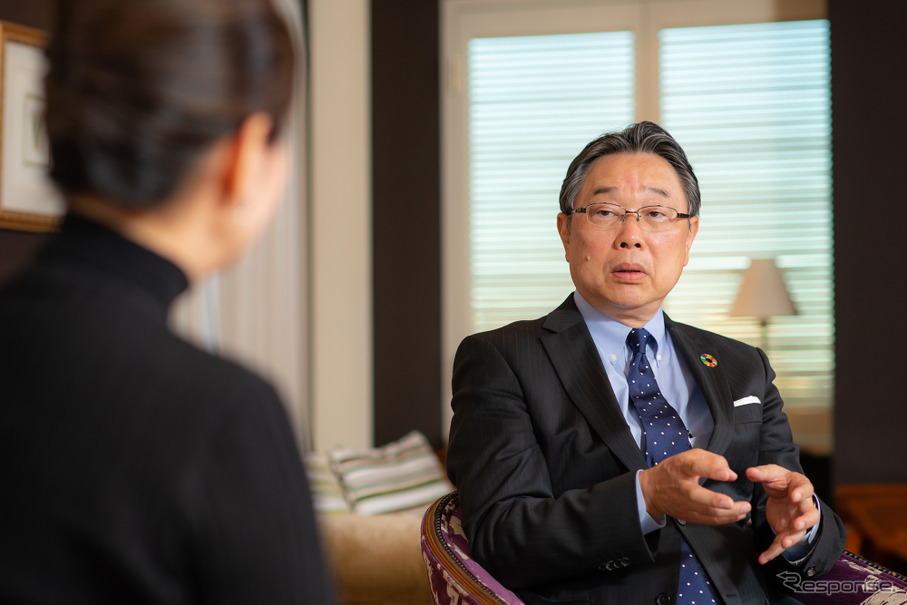
KotaniWhat was it like when you first joined a US company?
SugiharaI entered the company as a senior vice president, but was just one of about 100 senior executives. Foreign companies don’t tell you specifically what to do in detail. They just tell you to “get used to things.” Within the first month I held a meeting in part to introduce myself. Everyone looked at me like, “Who is this guy?” I was full of bluster, saying, “I’m Hiro, the number one guy. Looking forward to working with you.”
Kotani(Laughs)
SugiharaAnd instead, I asked everyone, “What do you do? Tell me.” So, everyone knew my name in no time. I was able to build relationships six months faster than if I had done things normally. One day my boss came and asked me, “What number am I?” I told my secretary to tell him he was “about 58th.”
KotaniI’ve been told that you were in charge of BtoB sales, but what did you do when it actually came to work?
SugiharaThe first thing I would do is ask, “Do you wanna make money?” Naturally, the other party would say yes, and then I would make my proposal... so I started with the conclusion.
KotaniSounds straight forward and easy to understand.
SugiharaWhen I would come to the negotiating table in China, the other party’s key person would sometimes raise a historical issue to use as leverage during the talks. I would say, “Sorry, I don't know much about history, but I apologize for any past mistakes. Getting back to business, do you wanna make money?” Everyone would answer yes. Talking about politics gets you off subject and wastes time, so I would experiment by returning to a shared topic. In my experience, everyone says yes...doesn’t matter if its Asia or the US.
KotaniIn a culture where standing out strongly is the norm, Japanese tend to be reserved. So, it sounds important to create a current that gains support.
SugiharaExactly, which is why I am straight forward and ask what the other person wants to do. This helps find common ground. Like Soichiro Honda (founder of Honda Motor) and Akio Morita (one of the founders of Sony), whom I respect, I feel strongly about technology, which is why I think I was able to say what needed to be said.
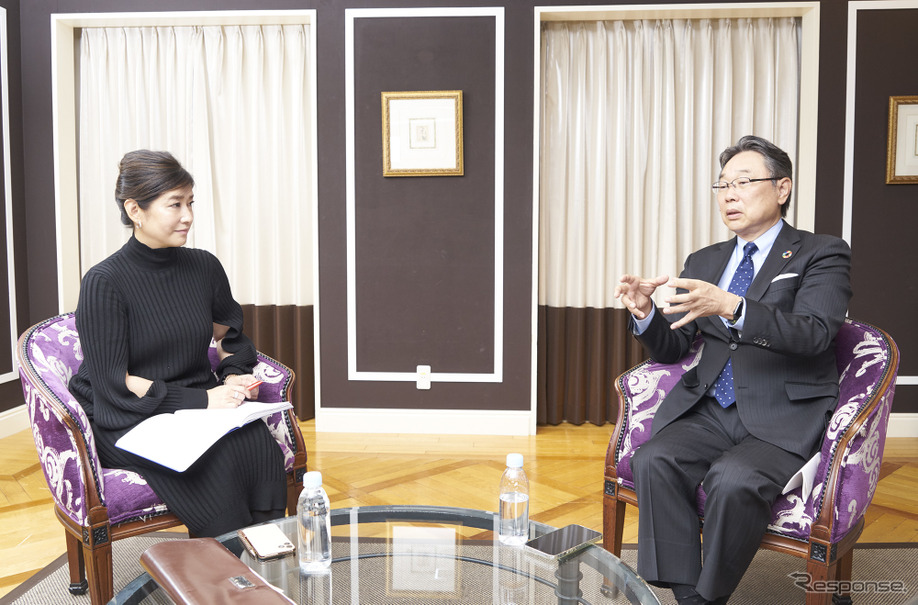
KotaniLet’s get straight to the point. What are you proposing for the future by changing your company’s name to GeoTechnologies?
SugiharaCertainly. The origin of the “Increment P” company name came from a programming language. It expressed the soul of our business activities. We were truly ahead of the times when we launched as a multimedia company during the mid-90s, and again when we began offering on-demand cloud services. After that, we concentrated on the car GPS systems business. So, the question was, what direction should we take in the future as an independent company?
I take inventory of current assets whenever I implement digital transformation (DX) somewhere, but what surprised me was that Increment P possessed more than 42 million sets of address data, 7 million km of road survey data, and information on where stores and public services are located in digital native formats. This was a treasure trove. So, it seemed to me that if we combined corporate management with new technologies, we would have enough assets and qualities to set sail. And we would be able to play a major role in the coming digital society. Our core competency is maps, however, and overlaying different types of information onto the topography itself is basically geography. And the term geography comes from geo, which includes the meaning Earth.
KotaniI see.
SugiharaIn other words, by combining the concept of Geo with various new technologies, we came up with the name GeoTechnologies, with which we hope many will sympathize. Having this much data is like having data for the entire Earth. And by having customers apply this data in various fields through the use of new technologies, we can move forward under our goal of making people happy. Just as a name represents an object, having a name that represented us was a major reason for the name change.
KotaniI see, you mean that you will apply DX to update the know-how that has coursed through the veins of your company thus far for the coming age. Having worked for IT companies in the past, why did you accept the offer of a company that is engaged in the map business?
SugiharaFor three reasons, mainly. The first was that it was a Japanese company. Second, although it is not as young as a startup, it has the will to change, and it possesses abundant business assets. Finally, I felt it would be rewarding if I were able to apply best practices, that is, lead the company to success, by incorporating the know-how I had acquired on foreign companies over nearly 40 years.
KotaniHow do you see the importance of DX in the automotive industry?
SugiharaAlong with being a key industry in Japan, mobility has maintained a critical role for ensuring that the future is peaceful and prosperous, even when seen over the course of recorded history. If you look at the music industry, for example, CDs have fallen by the wayside, cassette tapes went the way of the dinosaur before that, and music is now automatically distributed online. Against this backdrop, phones transformed into music players as they became smartphones. The automotive industry is at a similar crossroads.
But in the end, mobility and travel are the primary objectives of this industry, where travel can be for fun or for a critical service, such as transporting medicines, for example, so only the methodology and mechanisms for achieving these goals are changing. When the internal combustion engine (ICE) falls out of use and every car is driven by batteries and motors, these will be controlled by computers and IT. Which raises the question, how can the industry transform rapidly? As long as the industry relies on exports, automobiles must advance quickly through trial and error. Under such circumstances, I think we can help in a wider range of areas.
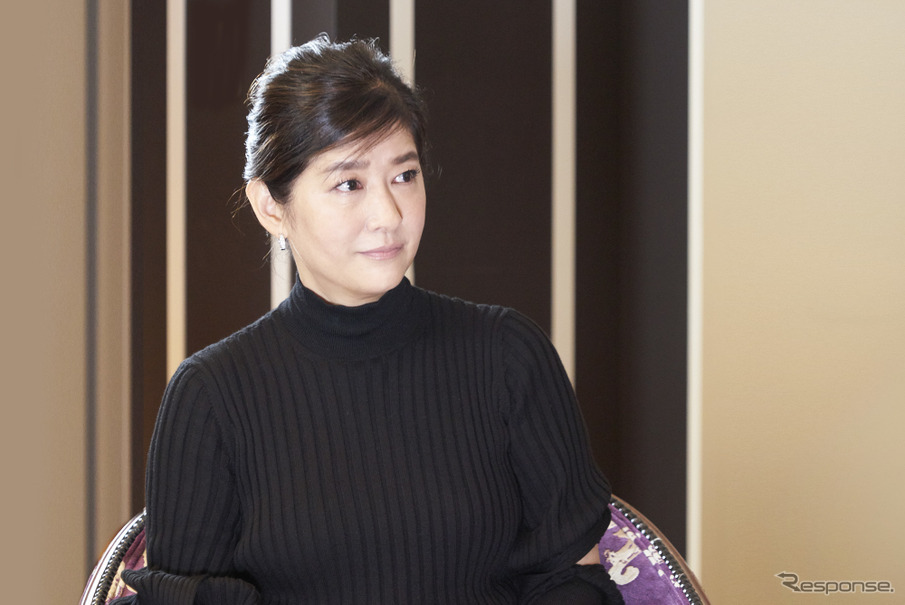
KotaniWe will see more options become available in the field of automotive hardware, like EVs and fuel cell vehicles, even as gasoline vehicles continue to be available. But as the industry shifts to MaaS and CASE, how will you apply DX to your map services?
SugiharaThe term “map” is familiar and easy to understand. Yet maps are simply composed of latitude and longitude. Just like saying “Where is this apple?” you can map the location of a car. Of course, the ability to navigate accurately will become a critical technology when new technologies like autonomous driving emerge. But maps will be used for more than just autonomous driving, where being able to provide various types of data overlaid on maps in a timely manner will become important for the future of mobility. We can dissect and analyze the data produced by drivers as output, and employ predictions to benefit other cars or people, for example. Being predictive, this approach is often called 5W1H, but in some cases the results are simply not informative without the WHERE.
KotaniIt seems that the key to the future lies in predicting individual behaviors, and then figuring out how to apply services on top of this and how to handle these using AI deep learning. Will you increase the amount of data through “Poikatsu -reward point collecting activities,” for example, based on data accumulated thus far?
SugiharaExactly. And smartphones will serve as the gateway. Which is because no one ever puts them down. If you ask us to make a map to a future vaccination site, for example, if we include the means of transportation to get to the site, specify if a taxi is necessary, and input that the site where the vaccination will take place will open 45 days from now, all the user will have to do is request the map to “go here” and they will arrive. If we link this series of actions to smartphones, networks, and data, in other words location information and map information, as well as to dynamic data, such as when the vaccination is available, and to national identification numbers, this will allow users to complete procedures and make payments all at once. It will be like being on one big computer. Once these types of cars become available, they will need a lot of electricity, though. Which means now you’ll need to be led to a recharging station where you can charge your battery. Recharging stations might even offer services like 10% discount coupons for using their facilities.
KotaniIt remains to be seen whether EVs will become the dominant trend, though. Toyota and some other manufacturers are even focusing on hydrogen. With the new rule of decarbonization in place, I think the automotive industry actually has questions about policies that only promote EVs. I’ve even heard that CO2 emissions from the EV production process are actually quite high, for example. So, it is also possible that somewhere along the line electricity will be replaced by something else like hydrogen.
SugiharaI also truly hope something like that happens. I want Japanese automobile manufacturers to become two-way players like Shohei Ohtani, and move forward with decarbonization through both combustion technology and EVs.
KotaniI agree.
SugiharaUp until recently, I was involved in the IT industry, which uses a massive amount of electricity. People who have never dealt with a communications system or server often comment on DX as if they are an authority on the subject, but from the point of view of someone who has run systems that operate 24 hours a day, 365 days a year, it takes nearly a year and a half just to hook up the electricity when building a 40-megawatt data center. With that in mind, there should definitely be an alternative to EVs. But, what do you think about this as someone who often speaks with the leaders of the automotive industry?
KotaniAutomobiles play a role in driving other industries as a key industry protecting the Japanese industrial sector in general. Yet Japanese policies don’t protect the auto industry. There is no denying the feeling that the government is being pulled by the insistence for decarbonization (carbon neutrality) from overseas.
SugiharaPeople in the IT industry (mainly in the US) don’t like big government. They say that too many regulations make it difficult to work, and if the government is incapable, they will just change things by voting, which is what impresses me about people from the US as a democracy. Map data is cut into squares, so I think we also need to show CO2 emissions by region and the distribution of hydrogen stations, for example, in an easy-to-understand way.
KotaniIn other words, make it possible to show and visualize CO2 emissions on a consumption basis.
SugiharaBecoming the de facto standard requires speed. These kinds of experiments will likely be attempted within frameworks similar to that of the Woven City (a futuristic experimental city being built under the leadership of Toyota in Susono City, Shizuoka Prefecture), but I think there are areas where we can also cooperate with and support these efforts.
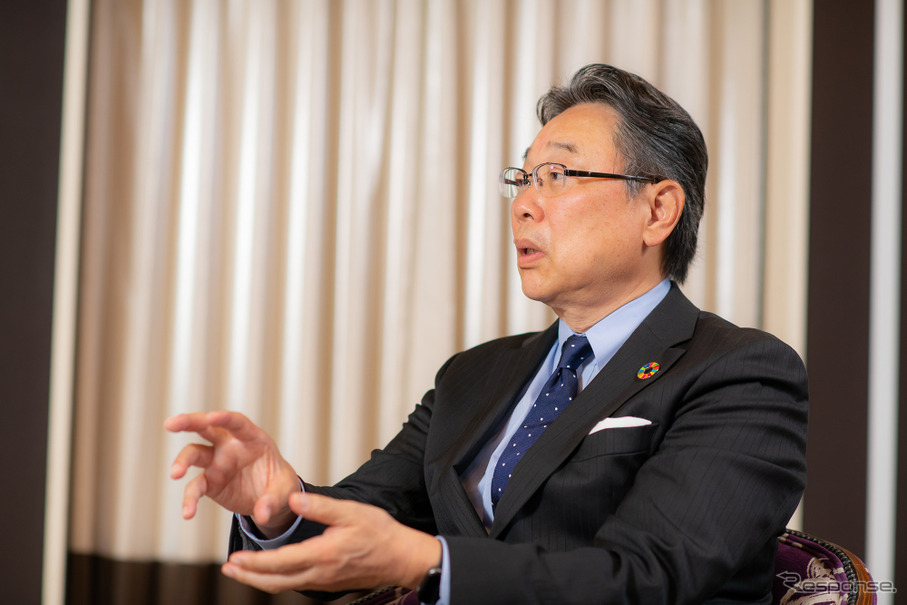
KotaniAs was discussed at the Davos Forum, it is now easier for us to share the sense of Earth and planet. Your concept of Geo seems to have something in common here.
SugiharaI really sympathize with this idea. Perhaps due to shyness, Japanese people tend to hide their global sense of the planet. If we think of the SDGs in a primitive sense, though, the ultimate meaning is that it is the Earth that gives us life, so we should work to ensure its continued existence. What we do in the Japanese archipelago is measure topography and land, and digitalize and sell the results. If we maintain gratitude for the life that is given to us in a sustainable manner, and work to make the planet happy, this will in turn benefit humans as well. This is something that people realize instinctively now. Against this backdrop, we are faced with seeing how far we can fulfill the mission with which GeoTechnologies has been presented.
KotaniIn fact, I’ve heard that only companies that can visualize their ESG investments will receive overseas funding. The SDGs present 169 targets among the 17 goals. The reason why the United Nations is concentrating its efforts now is probably because both human beings and society are beginning to come apart at the seams. If companies ignore the natural environment and pursue profits however they please, the human race will face the danger of extinction, so individual goals for which we must aim are necessary. In other words, I think the ultimate goal of ESG and SDGs is wellbeing. We must therefore prepare ways to ensure wellbeing endures indefinitely for everyone and our children over the long term. Although I think everyone is aware of this, since human beings only live for a few decades, people tend to think it is someone else’s responsibility and prioritize other things.
SugiharaWe are in the business of making maps, so it is our job to record every single road that has disappeared as a result of a natural disaster. As geography changes, we must update our maps, so preserving the global environment will connect to the very future of maps. Geo-Prediction is the act of forecasting what will occur based on location and geographical information. And we will promote this ability to make geographical predictions. Although our proposition is to predict what will change, having been unleashed from our focus on GPS systems for the traveling public, we will expand our technology and provide services from a broader perspective. Which is because we possess the technology and the data to do so.
KotaniAlong with worlds like the metaverse where you can have various experiences without moving around, there is also a world where you can consume through the experience of travel, in which you accumulate reward points just by moving around using point accumulation apps like “TRIP->MILE” in a way that connects to consumption activities. Yet it seems the way in which we travel will change in every respect.
SugiharaWe aim to enable people to change their lifestyles through Geo-Prediction as well, for example by moving based on information such as where and when a nursery school is scheduled to be built and if a commercial facility will be built in a neighboring area. I think it would be amazing to know that after choosing a new home it will be okay to have children there and that it will be possible to live there while continuing to work in the future.
KotaniI’m really looking forward to that day. We will be able to change our lifestyles based on maps. The very concept of movement will change. Finally, where do your goals lie as president?
SugiharaThis isn’t necessarily a goal, but I would like to propose something exciting while creating the momentum of being able to launch these kinds of services from Japan. I also have specific goals like going public, of course, and would like to use the funding gained from doing so to prepare the company for making people and the planet happy. I hope to create such a cycle. I think if the next generation and the younger people of today take advantage of successful experiences, things will be different in the future. Don’t you think that’s a really cool story?
KotaniThat sounds like a private sector-led reform to create new infrastructure. Thank you very much for your time today.
SugiharaIt was my pleasure, thank you.
※この記事の日本語版は こちら 。